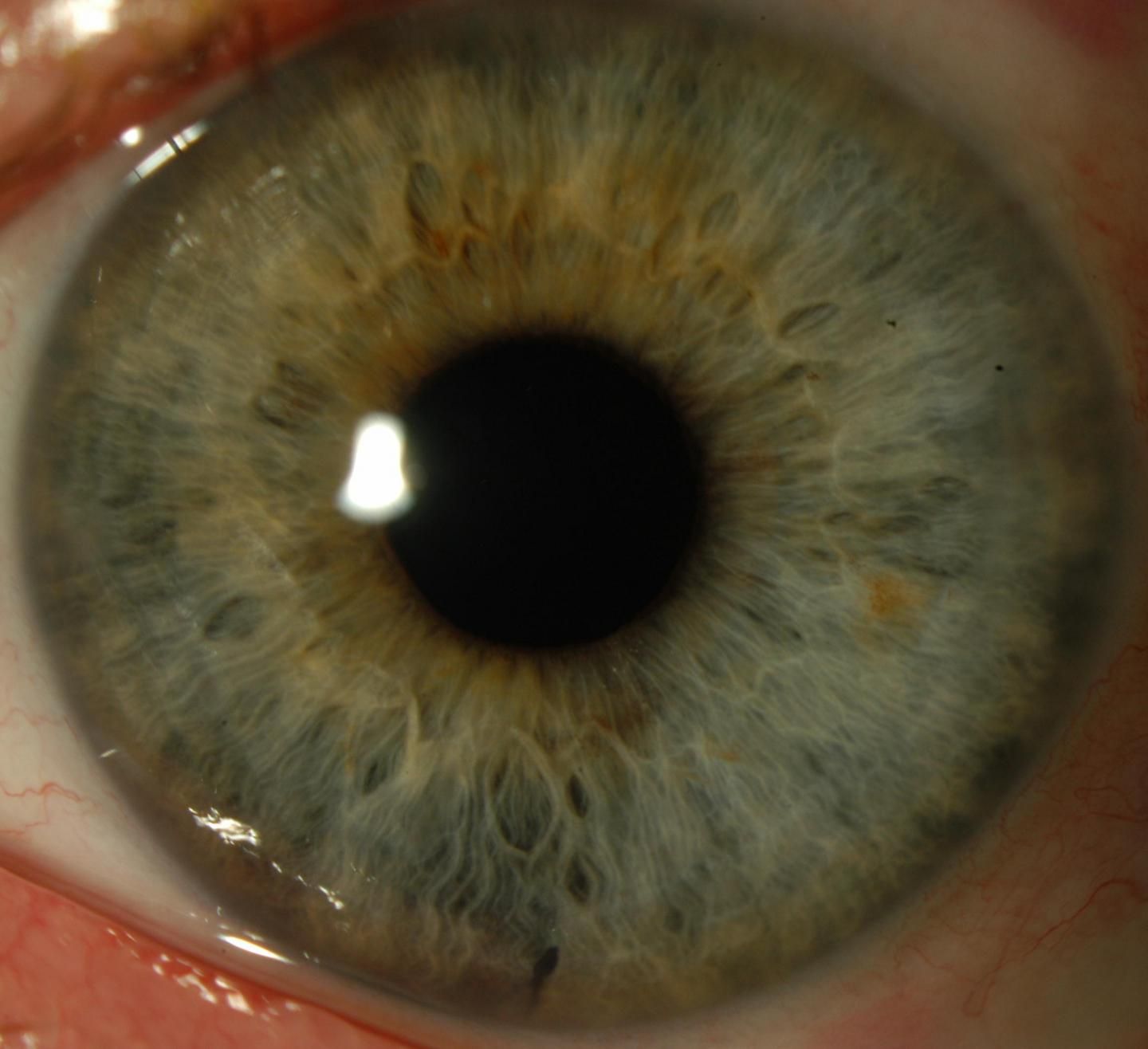Article
NIH-funded grant to support research to determine which diabetic individuals can donate corneas for transplant
Author(s):
Backed by a five-year, $6.4 million grant from the National Eye Institute of the National Institutes of Health, investigators from Case Western Reserve University, University Hospitals and the Jaeb Center for Health Research hope to determine which diabetic patients can successfully donate their corneas for keratoplasty (and which should not).
Descemet membrane endothelial keratoplasty, or DMEK (Image courtesy of Case Western Reserve University)

Investigators note that about a third of the corneal transplant surgeries in the United States involve people with diabetes who donate their corneas after death.
While the number of corneal transplants has continued to grow over the last decade, through continuous research, the medical community has learned that not all corneal tissue from diabetics may be suitable for the procedure, known as keratoplasty.
Investigators from Case Western Reserve University, University Hospitals and the Jaeb Center for Health Research have received a five-year, $6.4 million grant from the National Eye Institute of the National Institutes of Health to determine which diabetic patients can successfully donate their corneas for keratoplasty (and which should not).
According to Jonathan Lass, MD, the Charles I Thomas professor and vice chair for academic affairs in the Department of Ophthalmology and Visual Sciences at the Case Western Reserve School of Medicine and director of University Hospitals Eye Institute Eye Image Analysis Reading Centers, it is an important question that needs to be addressed.
“Doing so will have a major impact on eye-banking and keratoplasty practices,” he said in a statement.
According to the investigators, the question about which donors are suitable takes on an increased sense of urgency, with recent eye-bank data suggesting that diabetic donors comprise 30% to 35% of the cornea donor pool, a 50% to 72% increase in just over a decade. The numbers are rising simply because there are more people with diabetes in this country, said Lass, principal investigator and chair of the new study. And because the population is aging, so is demand for this kind of surgery.
Corneal transplant numbers increasing
according to the Eye Bank Association of America, the number of corneal transplants nationally declined 20% in 2020 because of the pandemic. That number is now recovering as elective surgeries climb back to pre-2020 levels.
Moreover, the number of corneal transplants has steadily increased since the association began tracking the procedure in 1991. Just over 51,000 corneal transplants were performed in the United States in 2019, up 17% from the previous decade and a 30% increase from 1991.
Although the standard approach for all types of keratoplasties is to use corneas from diabetic donors, some eye banks and surgeons are increasingly avoiding them for Descemet membrane endothelial keratoplasty (DMEK).
Investigators say they are focusing on DMEK for this study because it is the most common procedure high-volume corneal-transplant surgeons are performing, which will help recruit patients for the study) and because previous research found that eye-bank technicians had more problems preparing donors with diabetes for the DMEK surgery.
Focus of the new research
The study will focus on DMEK to examine transplant success and the loss of endothelial cells after surgery and determine the impact of donor and recipient diabetes on these outcomes.
The goal of researchers is to help inform the eye-banking and surgical communities about the safety and effectiveness of transplanting donor corneas from donors with diabetes.
According to investigators, the new Diabetes Endothelial Keratoplasty Study (DEKS) will involve about 16 eye banks and 30 clinical sites around the country. University Hospitals will be one of the clinical sites and will be led by Ahmed Omar, an assistant professor at the CWRU School of Medicine and director of the Cornea Service at University Hospitals Eye Institute.
"We are really excited that UH will be a clinical site of this huge study, which will shape the future for DMEK surgeries and address some of the important questions surrounding tissues from diabetic donors," Omar said in a statement. "This study could also help identify some of the reasons why 2% to 3% of donated corneas fail for no apparent reason, which is a reason for frustration among patients and surgeons."
According to investigators, the study will involve 1420 donors and more than 1000 patients. Two-thirds of the donors will be non-diabetic and one-third will be diabetic. Diabetes in the recipient will also be monitored to understand how that may impact the success of transplants.
The study will compare the one-year keratoplasty-success rate following DMEK with corneas from donors with and without diabetes, and the one-year loss of endothelial cells in the central cornea after DMEK with corneas from donors with and without diabetes. It also will explore how the severity of a donor's diabetes affects outcomes one year after DMEK surgery.
According to the statement, the co-investigator and co-chair of the study is Marianne Price, executive director of the Cornea Research Foundation of America in Indianapolis and a leading expert on the DMEK procedure. Other members of the Case Western Reserve and University Hospitals research team include Loretta Szczotka-Flynn and Beth Ann Benetz, professors in the Department of Ophthalmology and Visual Sciences; Baha Arafah, a professor of medicine at the School of Medicine and chief of clinical and molecular endocrinology at University Hospitals Cleveland Medical Center, and Vincent Monnier, a professor of pathology at the School of Medicine. The Jaeb Center for Health Research staff will include Colleen Bauza, leading the data management and analysis team, and Roy Beck, president and medical director.
The investigators also noted that their research is also supported by the Eye Bank Association of America, the Cornea Society, the Cleveland Eye Bank Foundation and several eye banks nationally, including Eversight, which has an affiliate in Cleveland and for which Lass serves as medical director.
Newsletter
Don’t miss out—get Ophthalmology Times updates on the latest clinical advancements and expert interviews, straight to your inbox.





